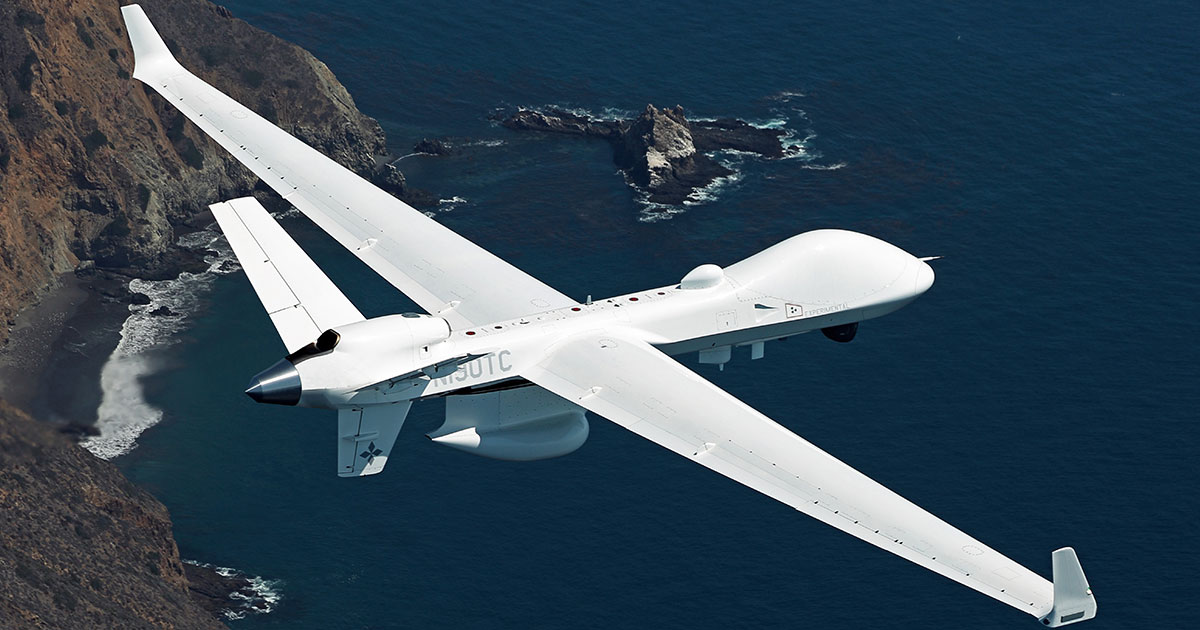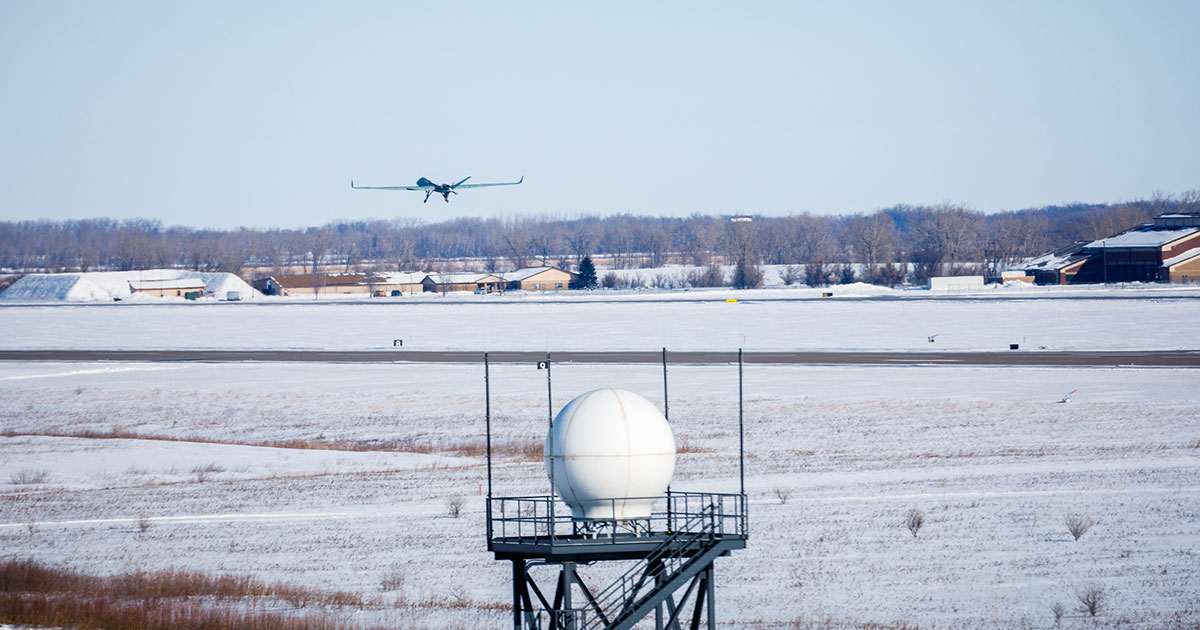MQ-9B - A Growing Track Record of Performance in the Maritime Domain
Unmanned aircraft have been revolutionizing intelligence, military, and so many other applications for years. Now their impact extends to the way navies operate at sea.
Leading the way is the MQ-9B SeaGuardian®, which enables the most advanced navies, coast guard agencies, and other maritime authorities to patrol longer, detect more, and make existing units much more effective.
Manufactured by San Diego-based General Atomics Aeronautical Systems, Inc., MQ-9B SeaGuardian has recorded a number of recent first-ever achievements in a range of operational and test environments around the world. Even as users prove out what the system can do as it begins to enter widespread service, they’re only scratching the surface of the ways MQ-9B will help rewrite the practice of sea power.
SeaGuardian has shown it can hunt for and help prosecute submarines. It escorts naval surface task groups. It provides sensing, targeting, and communications for the battle force. It self-deploys from its home station and integrates seamlessly into normal aviation traffic. When the mission is over, it flies back to its home station to get ready for the next assignment.
A substantial track record already is coming into focus.
In just two years’ time, the aircraft has recorded more than 12,000 operational hours in the service of the Indian Navy.
MQ-9B provided security and surveillance for the recent G7 2023 summit at its island location in Hiroshima, Japan.
And SeaGuardian has joined the U.S. Navy for some of its most complex and challenging integrated exercises – including a major anti-submarine warfare exercise this past May in which the aircraft, flown by its crew from a ground control station and operated via satellite, joined with U.S. Navy helicopter squadrons to search for submarines in a range off the coast of Southern California. Helicopter crews flew out from San Diego, dropped their sonobuoys, and then SeaGuardian took over monitoring them. Shortly thereafter, its sensors detected a simulated submarine. This meant other helicopters could deploy to the scene armed with precise data about the target’s location and course and then attack.
This U.S. Navy sub-hunting exercise was one of only several such exploits for SeaGuardian. In April, another, known as Group Sail, involved the aircraft partnering with Navy carrier strike groups off the coast of Hawaii, working with warships, aircraft, and other units to ensure the safe passage of the group’s surface ships.
Strike Group Integration
As part of Group Sail, carriers, cruisers, and destroyers, as well as F-35 Lightning II fighters, F/A-18E/F Super Hornets, EA-18G Growlers, E-2D Advanced Hawkeyes, MH-60 Seahawks, and P-8 Poseidons worked alongside MQ-9B SeaGuardian, which provided the Navy with maritime domain awareness, information dominance, targeting capability, and more. What the aircraft did, in effect, was serve as the distant eyes and ears for naval commanders.

Its onboard sensors can see all through the visual and infrared spectrum, including – with its onboard multi-mode radar – through clouds, fog, mist, or smoke. Other onboard systems can hear throughout the radio frequency spectrum, collecting intelligence of all kinds that contributes to the most complete common operating picture possible.
No other large medium-altitude, long-endurance aircraft can contribute to sea power like this – and there are even more ways that SeaGuardian contributes. The aircraft’s proprietary Detect and Avoid System, invented by GA-ASI, means that it can operate in civil airspace just like any other aircraft. This eliminates the need for special arrangements or human-flown escort aircraft like those that remotely piloted aircraft might have needed in the past.
Also new: SeaGuardian self-deploys to far-flung operating areas. In each of the U.S. Navy maritime exercises described here, the aircraft took off from its home station in California and flew to the base where it was needed. Compare the convenience and simplicity of that kind of operation to the way some unmanned aircraft might have worked in the past – being disassembled, packed into a crate, flown in another aircraft, and then reassembled for use on station. SeaGuardian makes all that unnecessary, with a great savings of time, money, and personnel.
Advanced onboard and supporting systems help make all this possible, including automatic takeoff and landing, artificial intelligence and machine learning, and cutting-edge networks. Satellite operations mean that MQ-9B’s pilots and crews can be located anywhere. During a May 2023 Northern Edge exercise around Alaska, for example, the crews flew SeaGuardian from the Pacific Northwest area of the United States at Naval Air Station Whidbey Island.

Such remote operation not only removes human crews from harm’s way at sea. It means MQ-9B can cover other inhospitable areas, such as the Earth’s cold ice-covered polar regions, without burdensome hardship deployments for crews or the necessity of also deploying search and rescue teams in case of a mishap. Taking the people off the aircraft protects them and their support units – all while reducing cost and complexity.
The big challenges of the 21st century to seafaring nations and the responsible use of the oceans aren’t simple or easy to tackle. But the good news is that navies, coast guards, and others charged with sea power, maritime domain awareness, search and rescue, and other missions have a tool ready to meet those challenges head-on in the MQ-9B SeaGuardian.